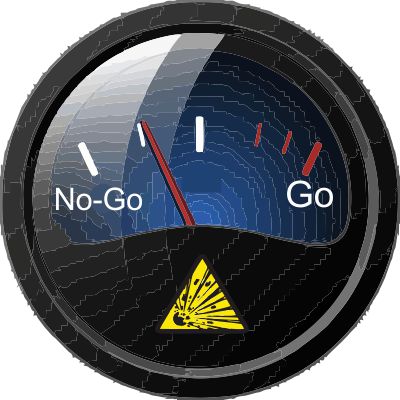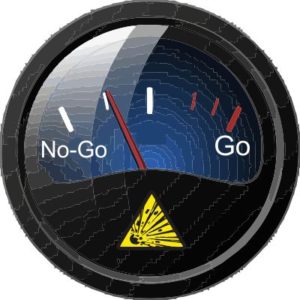
Go/No-Go Test
First test to determine if you have combustible dust
What is a Go/No-Go Test in Dust Hazard Analysis?
Go/No-Go Tests
The Go/No-Go test is the first step in dust hazard analysis it basically screens for the possibility of explosibility in a dust cloud withing your facility.
The concept of a Go/No-Go test is a pass/fail within 2 parameters or boundary conditions. The test is satisfied if and only if the “Go” condition is met and the “No-Go” condition is not.

How Go/No-Go Tests Relate to Combustible Dust?
The Go/No-Go Test is the first step in screening for the possibility of combustible dusts in your facility. Based on ASTM E1226, “Standard Test Method for Explosibility of Dust Clouds”, this test is an abbreviated set explosion severity method with three dust concentrations to determine if the sample is explosible. The test is done on a dust sample size of 100 grams sieved to 420μm using one 5-kJ chemical igniter as the ignition source.
Samples Tested "As Received"
It is worth noting that this test is generally performed with samples “as received” or sieved with a 40 mesh (420μm) screen. So it is important that samples are collected and transported correctly with the proper paperwork attached.
Understanding Go/No-Go Test Results
If Test Results Indicate: "Yes, it explodes"
If your test sample is a “Yes, it explodes” then further tests can be run to determine how quickly and how severe the explosion will be (KSt/Pmax Test), followed by testing what concentration of dust in the air will cause a risk of explosion (MEC Test). Next, another test can determine if a spark will cause an explosion (MIE test).
If Test Results Indicate: "No"
If your Go/No-Go test result is a “no” we next look at what temperature it will take to make your dust layer ignite. To find the Minimum Ignition Temperature (MIT) of a dust cloud in the air, the MIT tests the minimum temperature that would cause your dust cloud to ignite. Also the LIT Test is performed, which determines the hot-surface ignition temperature of a dust layer. Finally, a Burn Rate test is conducted to determine how quickly the dust material will burn.
All of these tests start with the Go/No-Go Test. A comprehensive Dust Hazard Analysis (DHA), can apply your test results to real world scenarios at your facility to determine what you are dealing with so you can plan safely!
Submitting Dust Samples
Important Notes about Dust Samples
Your sample may be screened to less than 420 μm (40 mesh) to comply with OSHA’s and NFPA’s demarcation of a dust and to facilitate dispersion into a dust cloud. Particle size may vary widely depending on the sample. Please note also that per ASTM recommendations (and some NPFA requirements); samples should be tested at a particle size less than 75 μm and less than 5% moisture.
Please note that testing materials in a method not compliant with the ASTM/EU recommendations may produce explosion severity and explosion sensitivity data that is not considered conservative enough for explosion mitigation design.
AST Group is Here to Help
The AST Group of Companies offers testing and consulting services to complete a Dust Hazard Analysis through AST Canada and AST Engineering.

AST Canada has been helping clients find solutions for their unique Dust, Mist & Fume Collection needs for more than 40 years.
We can help you too.



